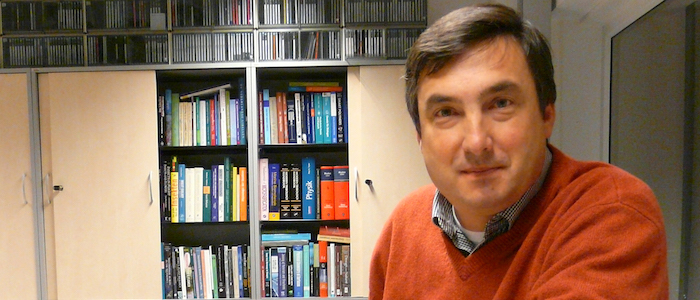Stanislav N. Gorb

Kiel University
Department Functional Morphology and Biomechanics
Zoological Institute of the Kiel University
Am Botanischen Garten 1–9
D-24118 Kiel
Germany
Stanislav Gorb
…is Professor and Director at the Zoological Institute of the Kiel University, Germany. He received his PhD degree in zoology and entomology at the Schmalhausen Institute of Zoology of the Ukrainian Academy of Sciences in Kiev (Ukraine). Gorb was a postdoctoral researcher at the University of Vienna (Austria), a research assistant at University of Jena, a group leader at the Max Planck Institute for Developmental Biology in Tübingen and the Max Planck Institute for Metals Research in Stuttgart (Germany) before moving to Kiel. Gorb’s research focuses on morphology, structure, biomechanics, physiology, and evolution of surface-related functional systems in animals and plants, as well as the development of biologically-inspired technological surfaces and systems. He received the Schlossmann Award in Biology and Materials Science in 1995, the International Forum Design Gold Award in 2011 and Materialica "Best of" Award in 2011. In 1998, he was the BioFuture Competition winner for his works on biological attachment devices as possible sources for biomimetics. In 2018, he received Karl-Ritter-von-Frisch Medal of German Zoological Society. Gorb is a Corresponding member of the Academy of Science and Literature Mainz, Germany (since 2010) and a Member of the National Academy of Sciences Leopoldina, Germany (since 2011). Gorb has authored several books, more than 500 papers in peer-reviewed journals, and holds five patents.
Since 2008 – Professor (W3) in Functional Morphology & Biomechanics at Kiel University, Kiel, Germany
2002-2008 - group leader (Evolutionary Biomaterials Group) at the Max Planck Institute for Metals Research, Stuttgart, Germany
1999-2002 - group leader (Biological Microtribology Group) at the Max Planck Institute of Developmental Biology, Germany
1998-1999 - assistant, Institute of Special Zoology and Evolutionary Biology of Friedrich-Schiller-University Jena, Germany
1996-1998 - postdoc, Max-Planck-Institute of Developmental Biology, Tübingen, Germany
1994-1995 - postdoc, Institute of Zoology, University of Vienna, Austria
1990-1994 - researcher, Schmalhausen Institute of Zoology, National Academy of Sciences, Kiev, Ukraine
Other activities:
Since 2010 - Corresponding member of the Academy of Science and Literature Mainz, Germany
Since 2011 - Member of the National Academy of Sciences Leopoldina
Research synopsis
Our research includes approaches from several disciplines: zoology, botany, structural biology, biomechanics, physics, and materials science. Using a wide variety of methods, the group studies mechanical systems and materials which appeared during biological evolution. The research is mainly focused on biological surfaces specialised for enhancement or reduction of frictional or/and adhesive forces. Such surfaces are composed of highly-specialised materials and bear surface structures optimised for a particular function. Some of these systems employ secretory substances, modulating forces in the contact area. Laboratory techniques include a broad range of imaging techniques, such as atomic force microscopy (AFM) in many modes of operation, light/fluorescence microscopy, confocal laser scanning microscopy, cryo scanning electron microscopy, reflection contrast microscopy, µCT, white-light interferometry and physico-chemical analysis techniques, such as contact angle measurement devices, and tribometers of different kinds.
This study is Project 9 of the SPP 2332 PoP.






